December 7th, 2024
9minute read
The P-47 Thunderbolt was an absolute monster of a fighter plane.
Power came from a Pratt and Whitney R-2800-59 18-cylinder air-cooled radial engine producing 2,000 horsepower.
The massive Thunderbolt packed eightM2 Browning .50-cal.
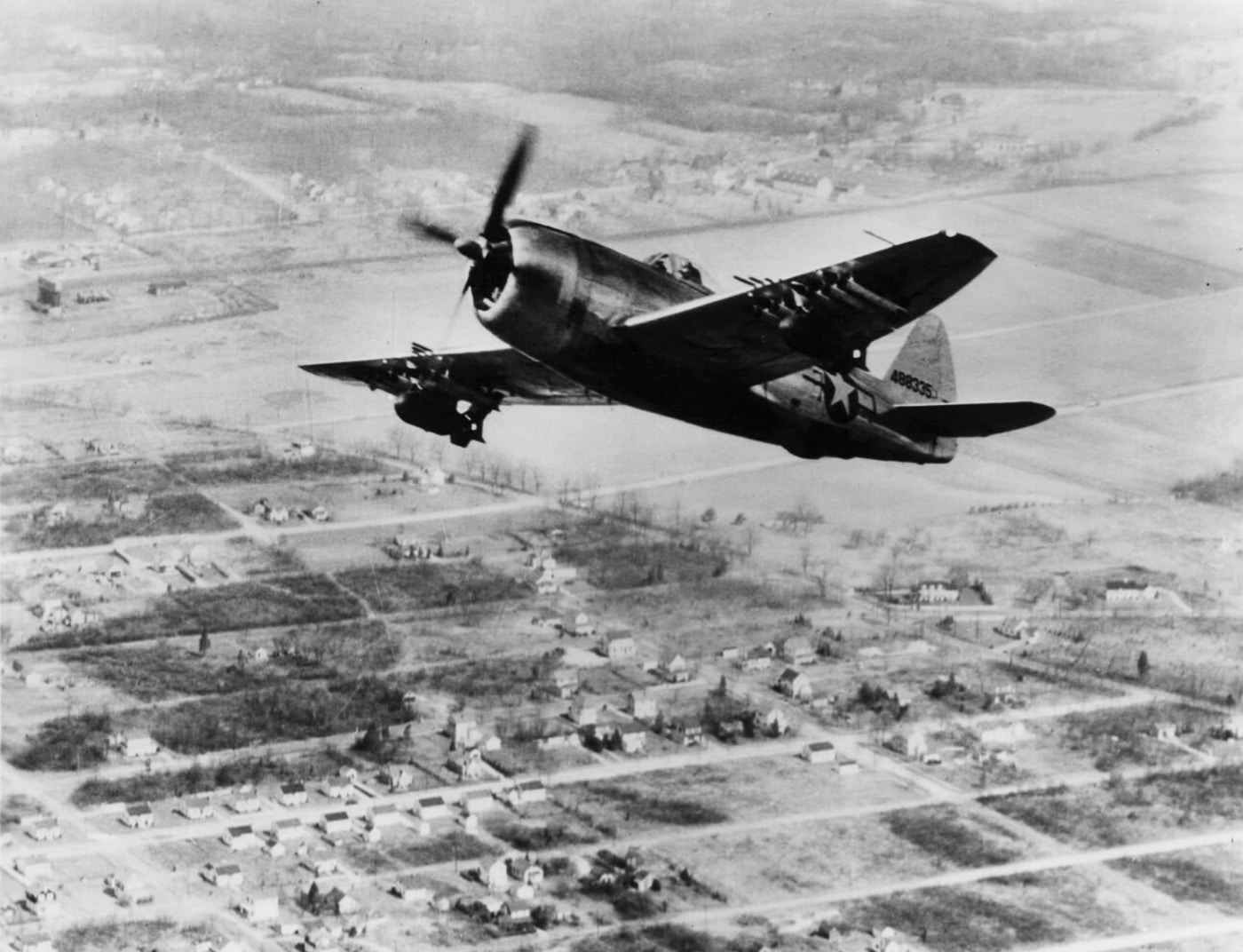
Captured mid-flight, the Republic P-47 Thunderbolt and its iconic radial engine earned a fearsome reputation in the skies. Image: NARA
machine gunsin the wings, each with 425 rounds of ammunition.
Most American fighters carried six.
Thunderbolt pilots called the big plane the Jug.
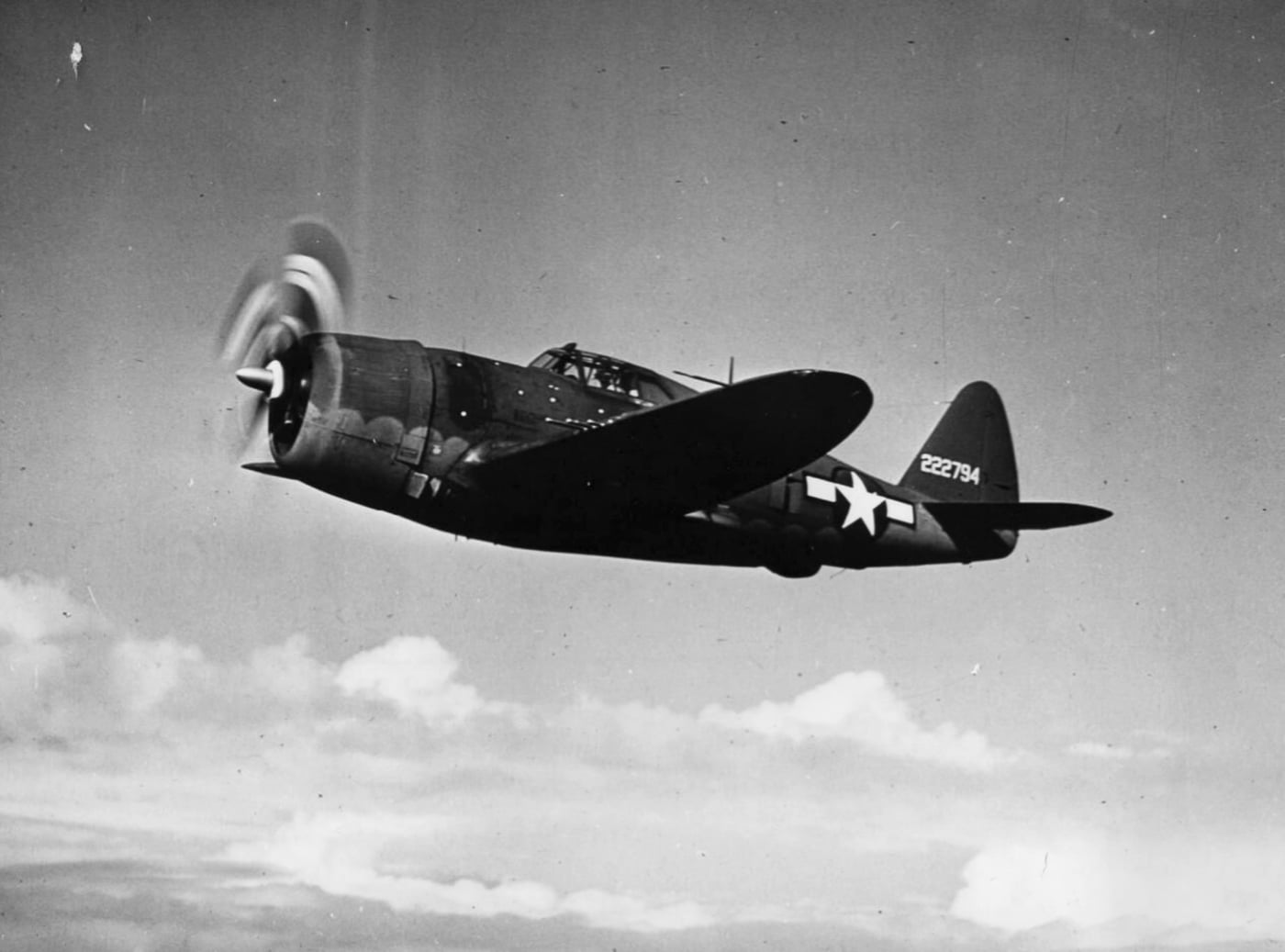
With its rugged design, the Republic P-47D Thunderbolt shows why it earned the nickname “The Jug.” Image: NARA
The heavy fighter could also outdive most anything in the skies.
When used to its maximum advantage, this made the P-47 an exceptionally lethal air combat platform.
Arguably the most redeeming attribute of the P-47 was the planes toughness.
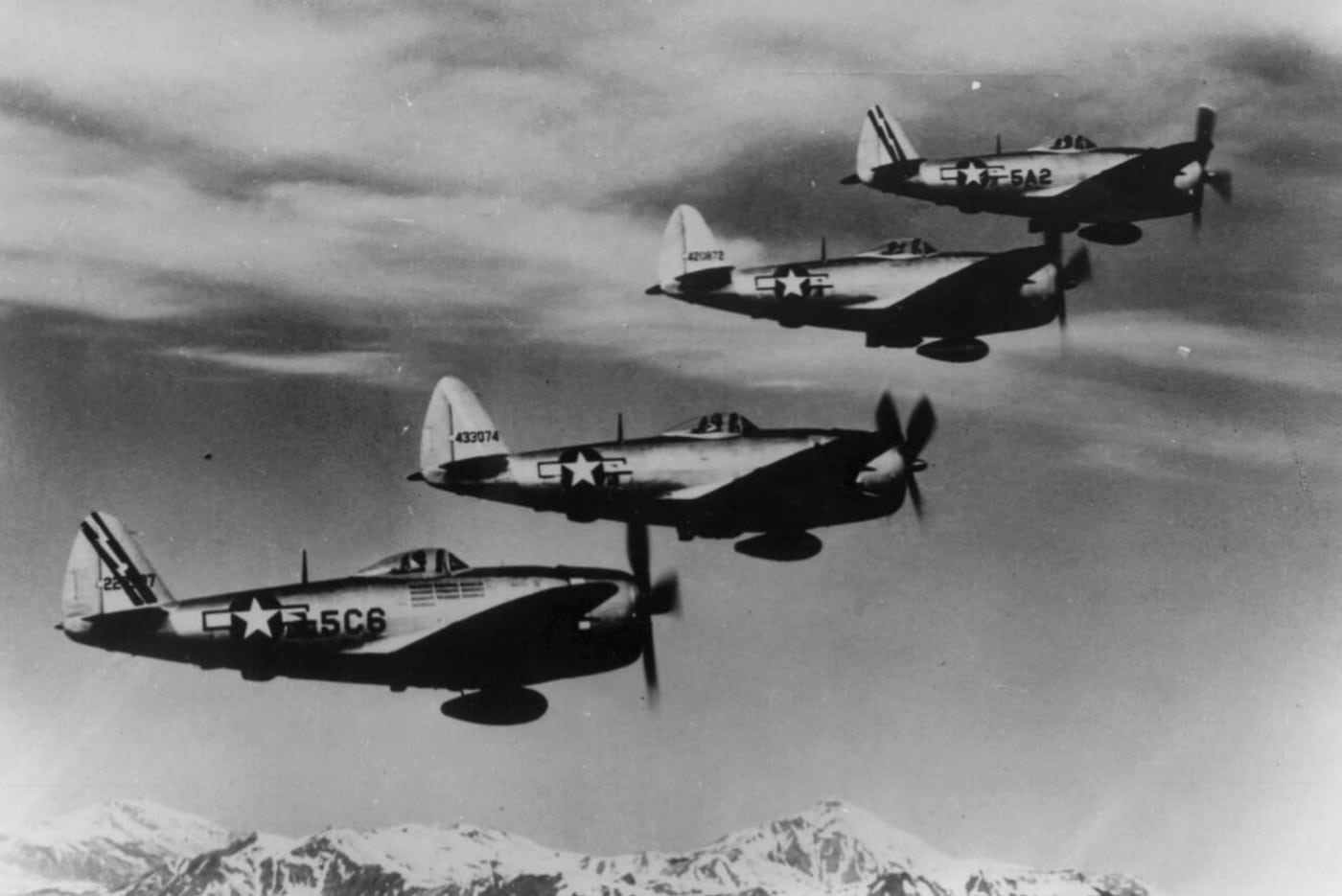
Bubbletop Republic P-47D Thunderbolt variants of the 12th Air Force flying in formation over Appenine Mountains in Italy. Image: NARA
When equipped with external drop tanks, the P-47 did an admirable job of long-range bomber escort.
When unleashed against terrestrial targets, the Jug was pure death against such stuff as locomotives and tank columns.
The unconventional design of the big plane had some curiously international origins.
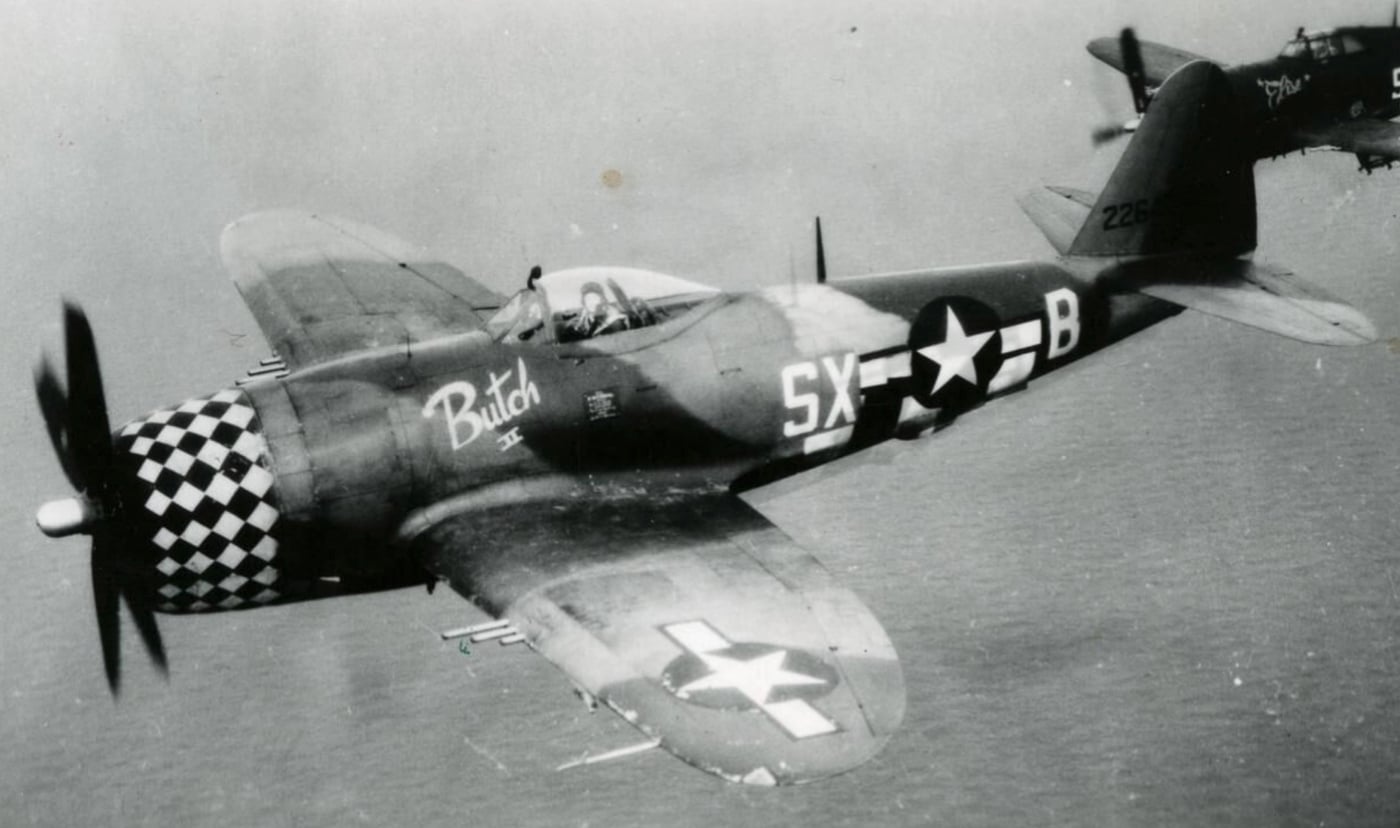
The pilot of a 352nd Fighter Squadron, 353rd Fighter Group P-47 Thunderbolt looks at the camera. Image: NARA
Origin Story of the P-47 Thunderbolt
Alexander P. de Seversky was a Russian national originally from Georgia.
Once he recovered, Seversky resumed flying combat missions with an artificial leg.
By wars end, he was credited with 13 kills.
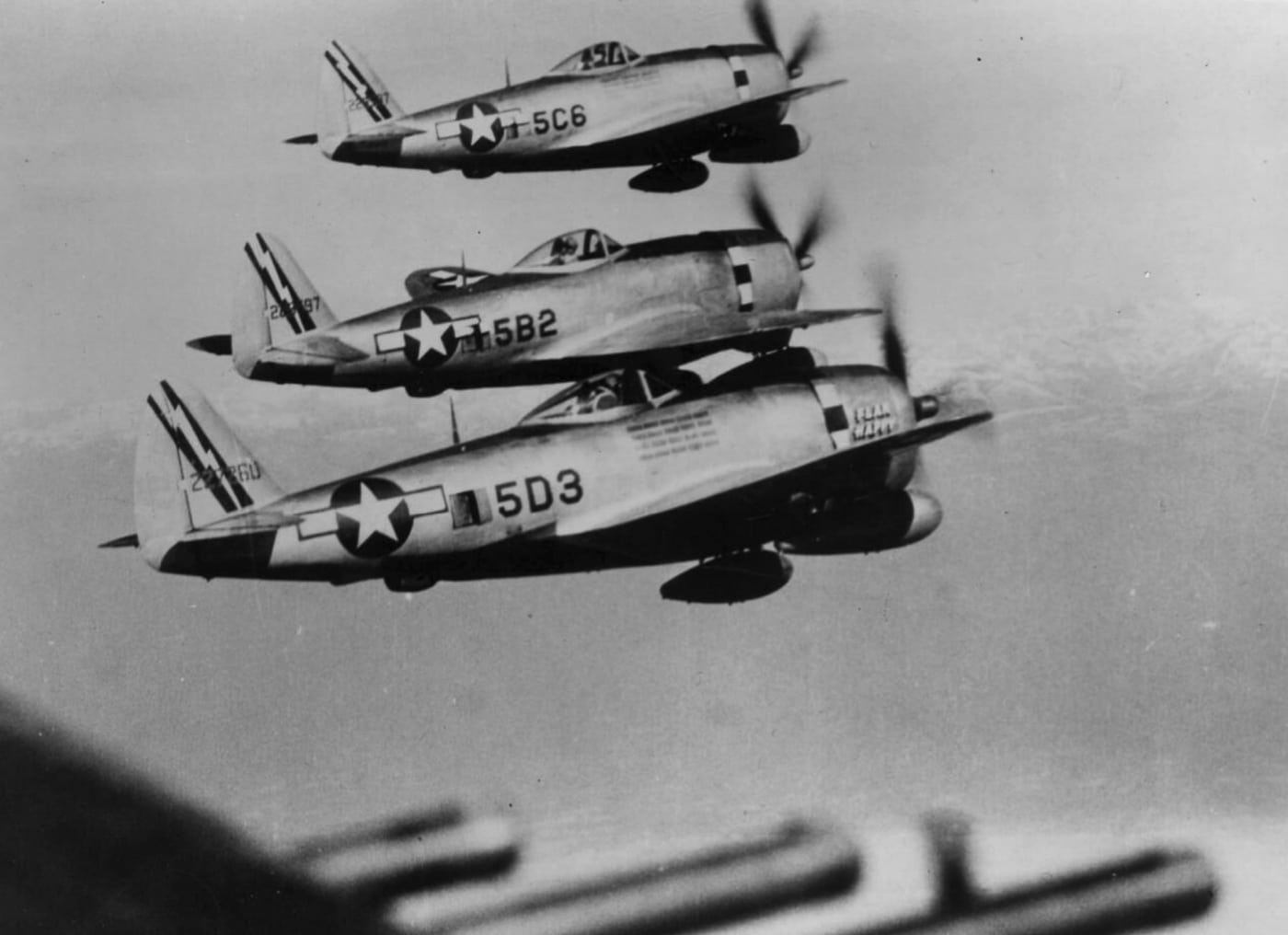
P-47 Thunderbolts of the 12th Air Force fly in formation during a mission escorting North American B-25 Mitchells headed for German targets in northern Italy. Image: NARA
In 1918, Seversky was sent to the U.S. to study aircraft design.
While there, the communists took over in Russia and began killing most everybody they could catch.
Severskys first aviation company succumbed to the stock market crash of 1929.

Ground personnel load .50 BMG ammunition into the wings of a P-47 Thunderbolt, prepping it for its next mission. Image: NARA
However, in 1931, he launched the subsequent Seversky Aircraft Corporation.
Once established, Seversky hired Michael Gregor and Alexander Kartveli, two other expatriate Russian engineers.
Together, they started out building floatplanes.

With animated movements, a P-47 pilot vividly describes a dogfight while escorting bombers to their targets. Image: NARA
The Seversky SEV-3 set a new world speed record for amphibious aircraft.
It also laid the foundation for greater things to come.
The SEV-3s broad, semi-elliptical wing eventually found its way onto the P-47 Thunderbolt.
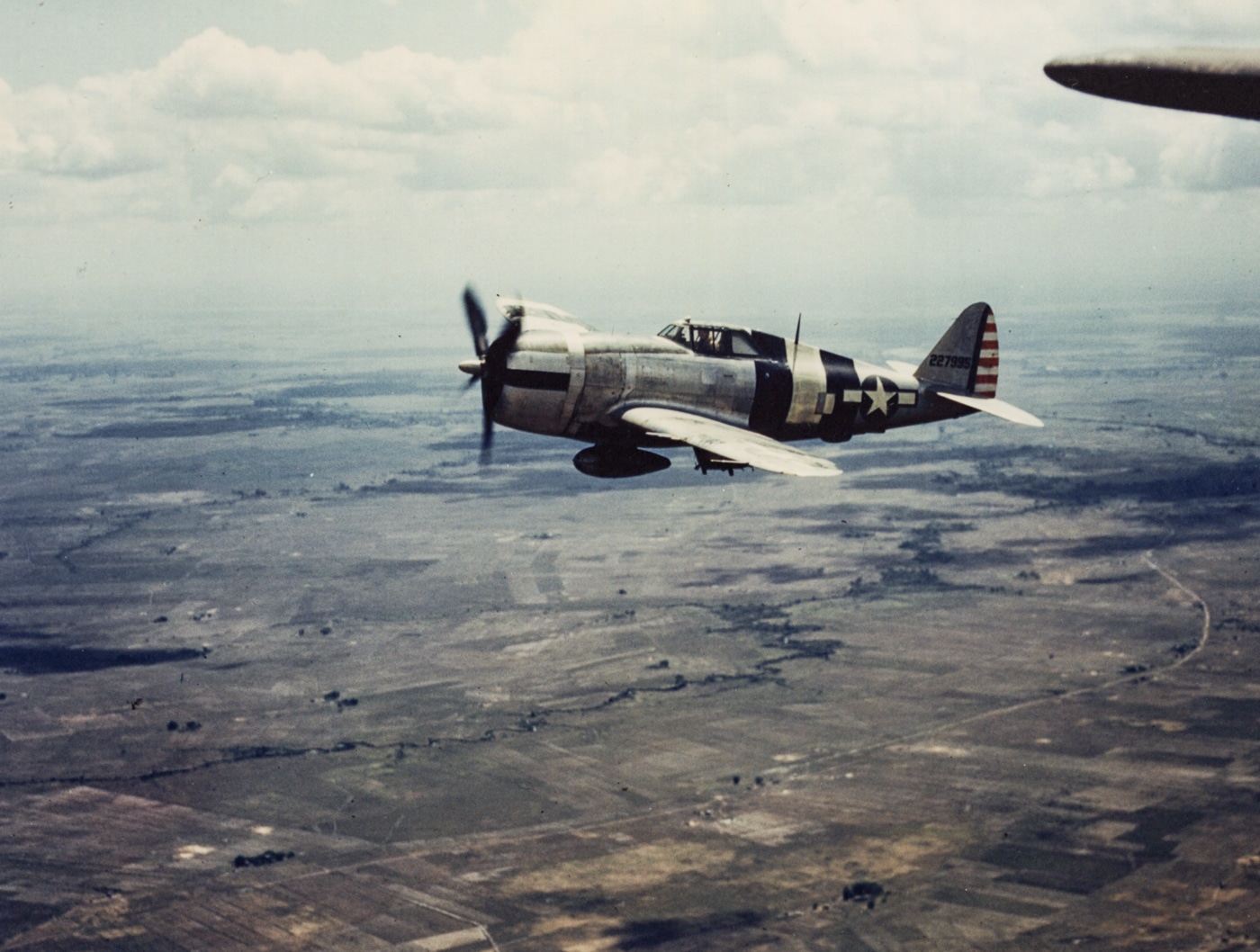
A Republic P-47 Thunderbolt armed for a bombing strike in the Philippines during World War II. Image: NARA
Seversky then produced the BT-8 trainer that they sold to the Army Air Corps.
This led to the P35, Severskys first fighter aircraft.
He sold this ugly little airplane to the Soviets, the Colombians, the Swedes and the Japanese.
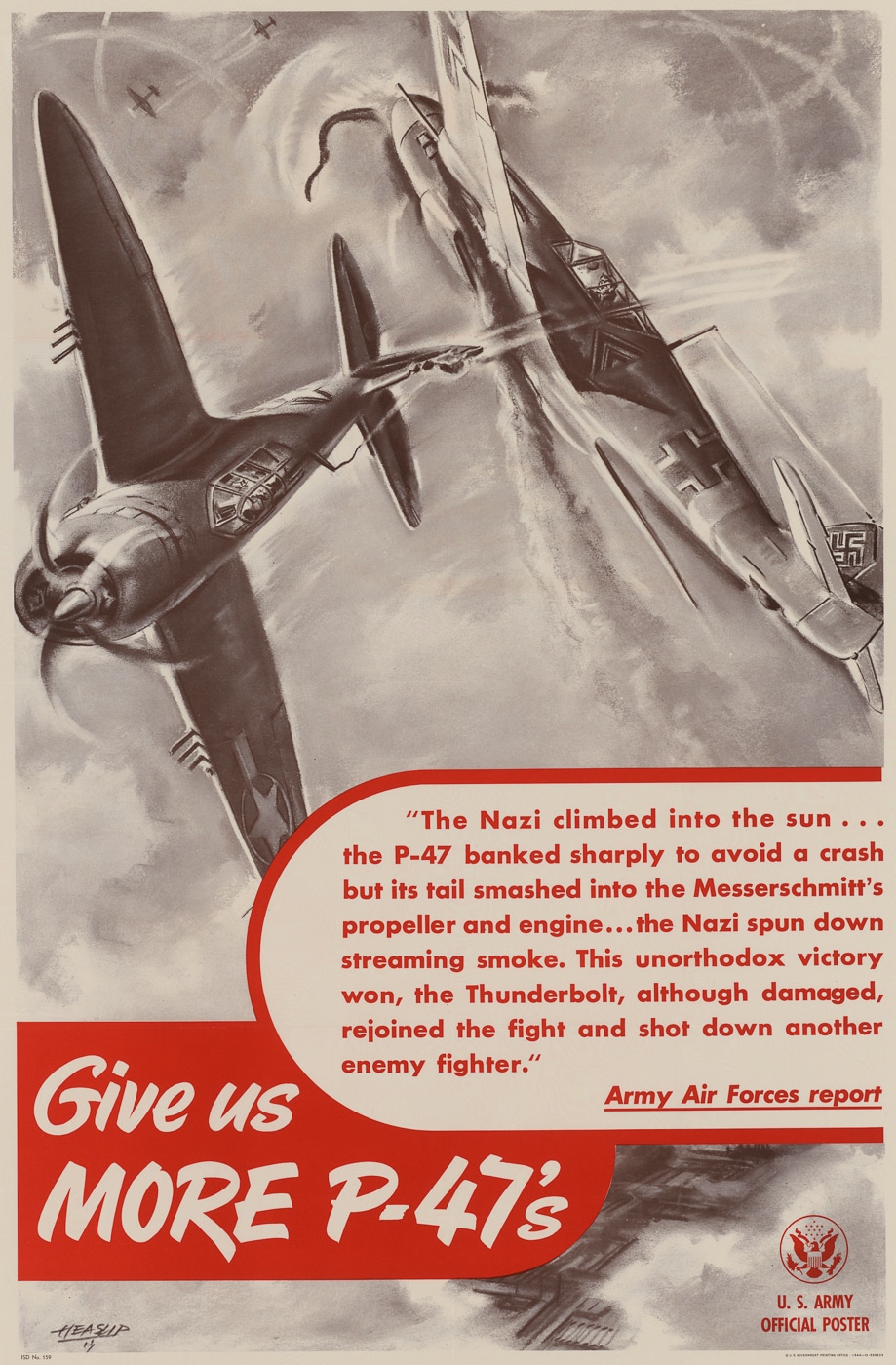
The “Give Us More P-47s” war bond poster highlights the vital role of the Thunderbolt in the war effort. Image: NARA
Seversky subsequently developed the AP-4, a radial engine-powered fighter that incorporated a radical turbo supercharger.
This plane lost out to theCurtiss P-40in the competition to become the Army Air Corps premier pursuit plane.
These production examples were designated the XP-43 Lancer.
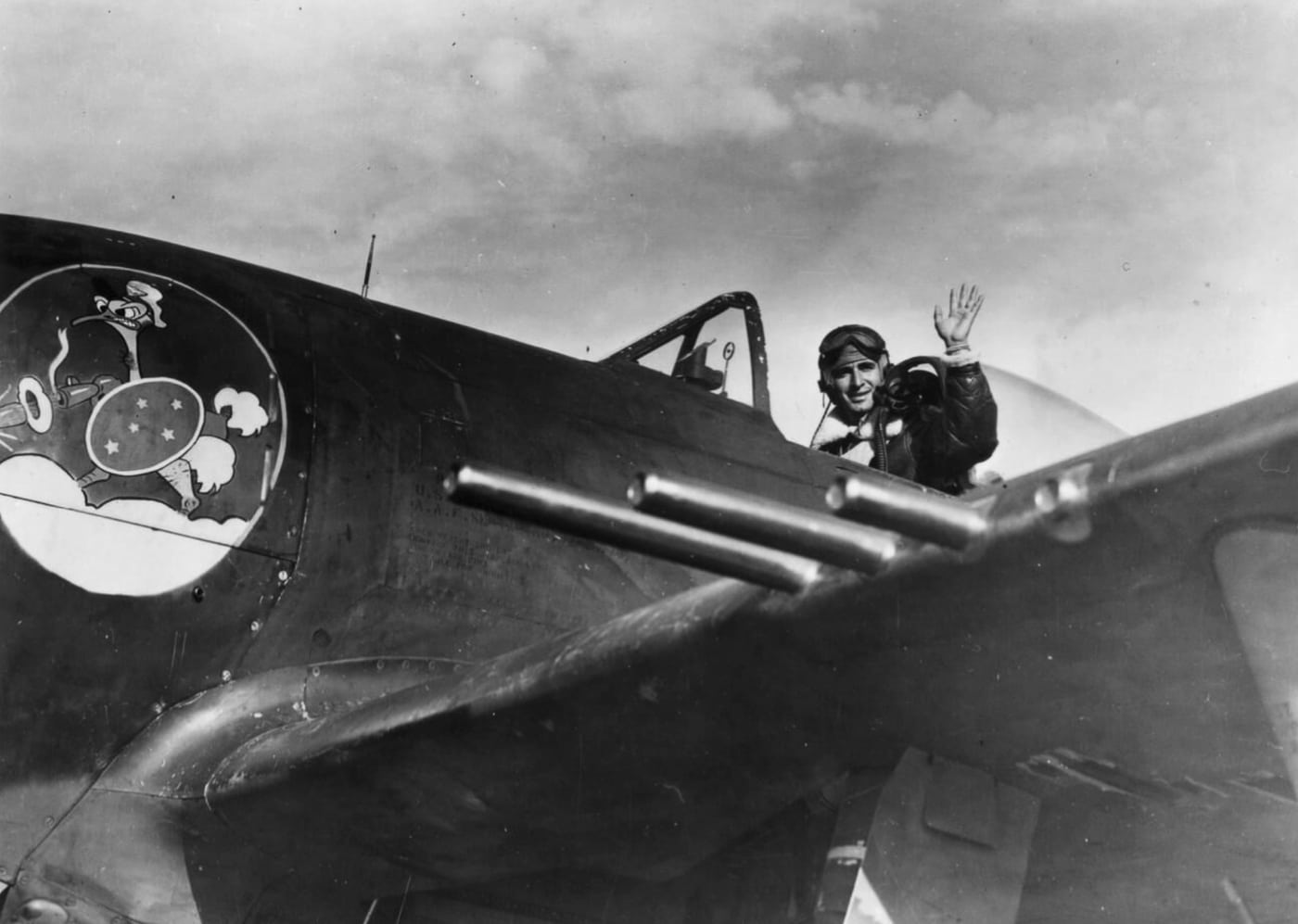
2d Lt. Jorge Taborda, 1st (Brazil) Fighter Squadron in the cockpit of his P-47 Thunderbolt. He was one of 48 Brazilian fighter pilots assigned to the U.S. 12th Air Force in Italy. Image: NARA
Along the way, there was a shake-up in management and Seversky Aircraft Corporation became Republic Aviation.
After a great deal of extremely accelerated mechanical evolution, the P-43 eventually begat the Republic P-47B Thunderbolt.
P-47 Fighter Details
The XP-47B prototype clocked a blistering 412 mph at 25,800 feet in 1942.
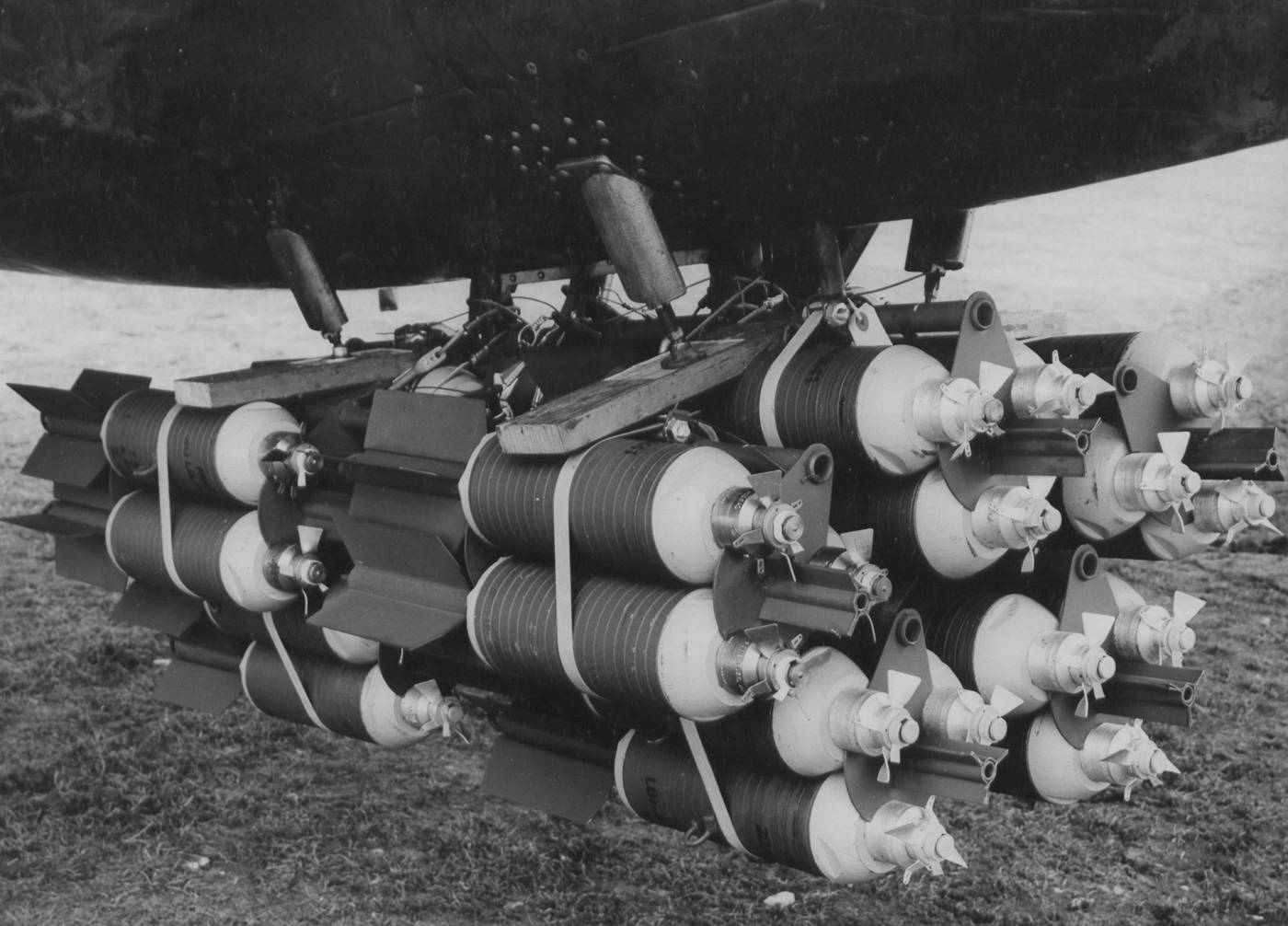
Clusters of bombs are carefully loaded onto a Republic P-47 Thunderbolt in 1944. Image: NARA
This was truly stupendous performance for its day.
By wars end, the P-47 had become Americas most-produced fighter aircraft.
15,636 copies saw service.
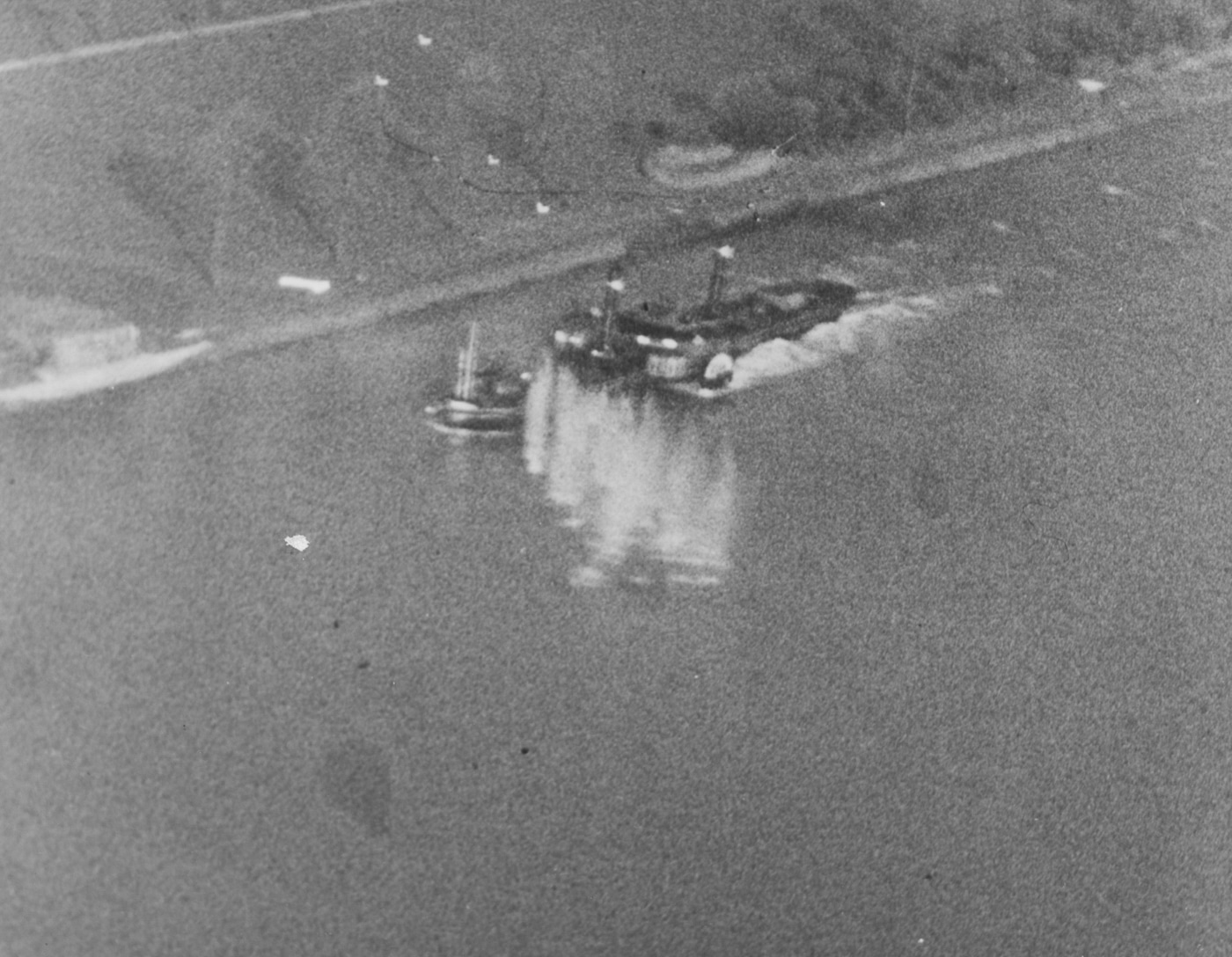
A Republic P-47 Thunderbolt strikes a river boat in France during a 1944 mission. The aircraft’s powerful armament proved critical in disrupting enemy supply lines. Image: NARA
Where the Lightning and Mustang were delicate thoroughbreds, the Thunderbolt was a draft horse.
The Quick Engine Change system built into the airframe cut the time for an engine swap by 60%.
One Jug driver described it as being, Like a lounge chair.
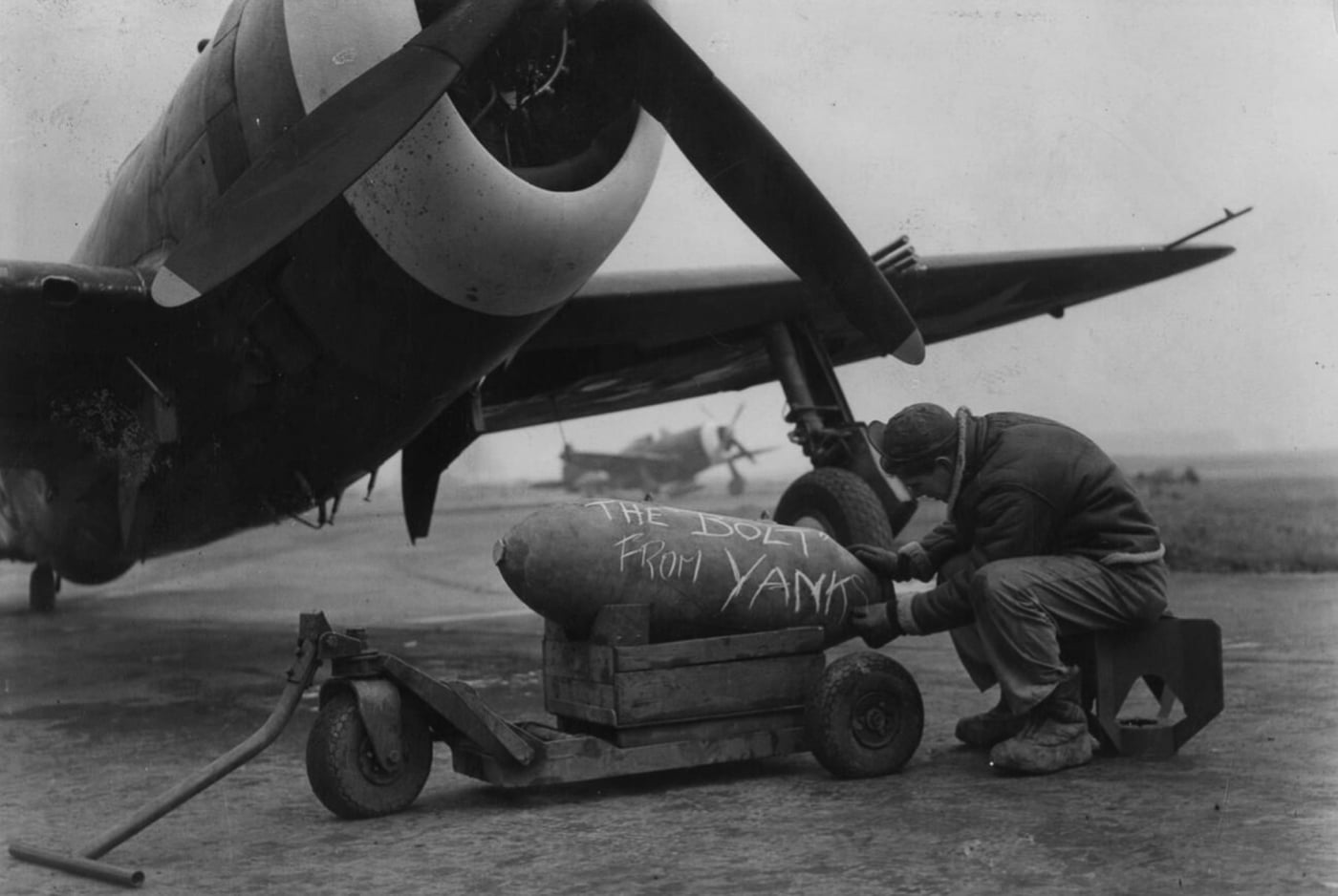
At Metfield Air Base, Sgt. Thomas J. Zettervall adds a personal message, “The Bolt From Yanks,” to a 500-lb. bomb before it is loaded onto a P-47. Image: NARA
Among them was a tail-mounted radar threat warning equipment.
However, it was illustrative of the cutting-edge technology folded into the machine.
Practical Performance
The P-47 flew its first combat mission over occupied France on 10 March 1943.
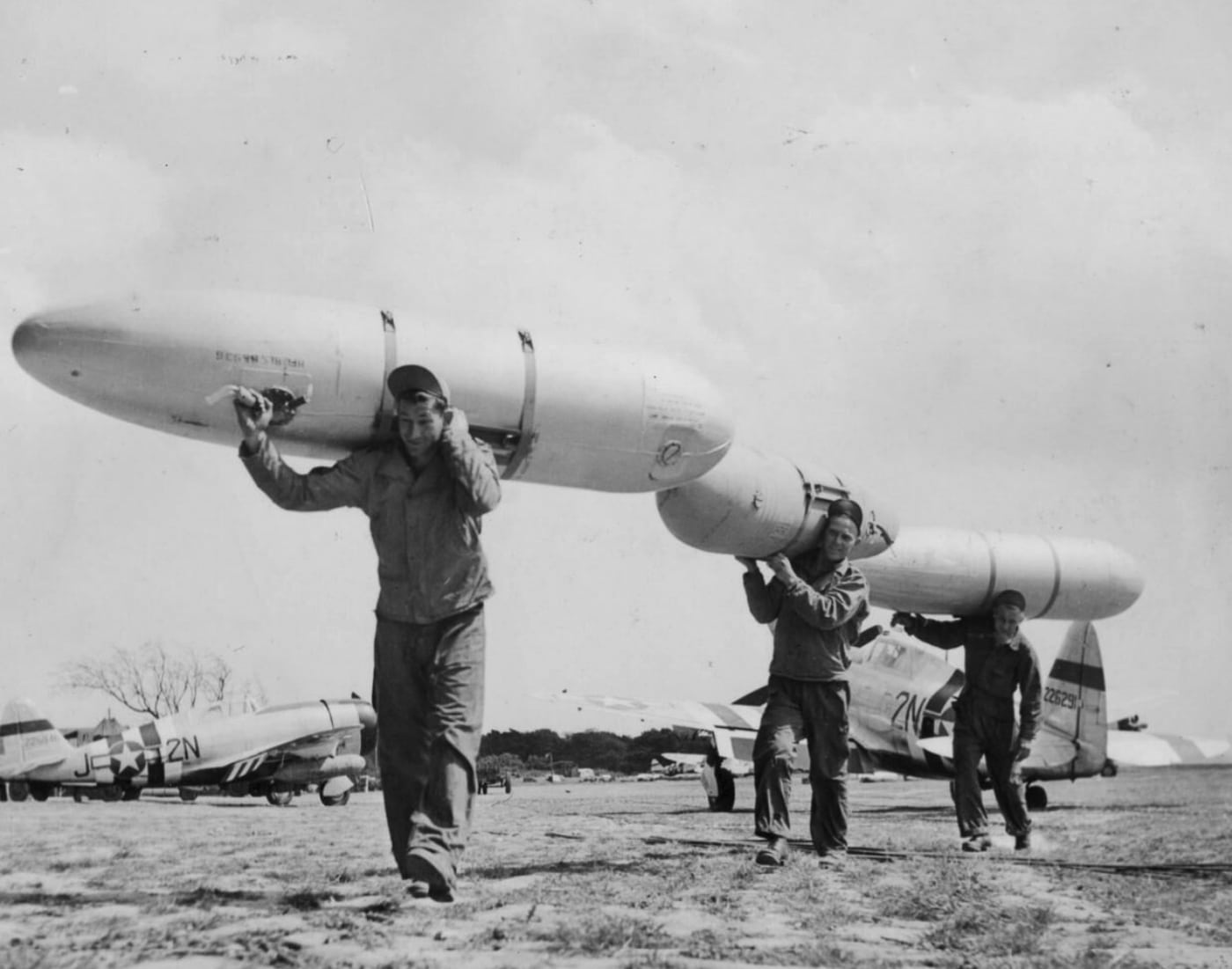
Ground crew members carry 108-gallon fuel drop tanks at a P-47 Thunderbolt base. Image: NARA
Major Don Blakeslee scored the Jugs first kill, a German FW190, the following month.
In short order, the Thunderbolt was seeing combat in every theater of war, save Alaska.
By 1943, the P-47 was the USAACs primary fighter-bomber.
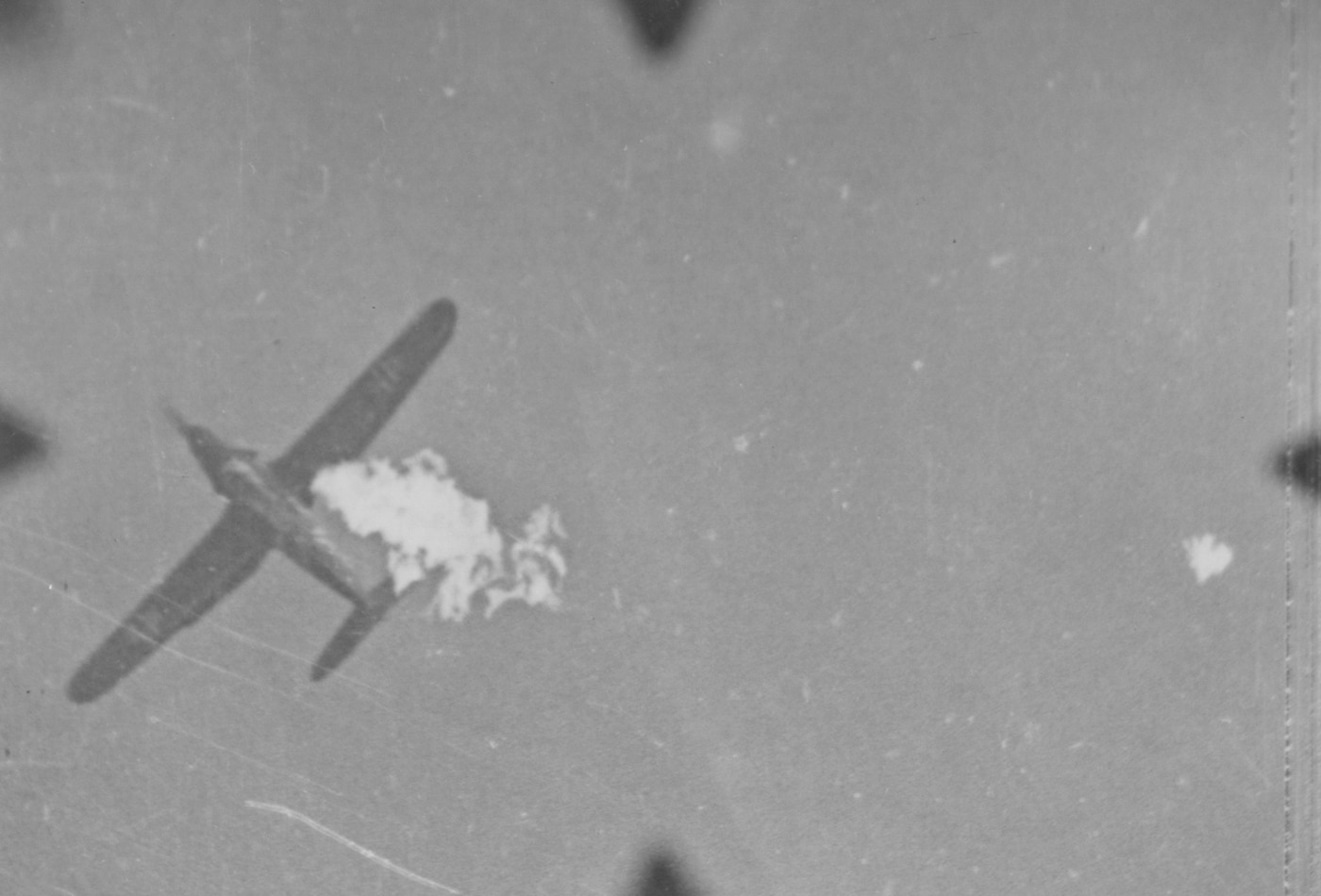
A gun camera on a Republic P-47 Thunderbolt records a victory over a German Bf 109 fighter aircraft. Image: NARA
The HVAR was also called the Holy Moses for the impressive racket they made when fired.
Thunderbolt pilots ultimately claimed 86,000 railroad cars, 9,000 locomotives, 6,000 armored fighting vehicles and 68,000 trucks.
The Germans called these ground attack fighter-bombers Jabos, and they were justifiably terrified of them.
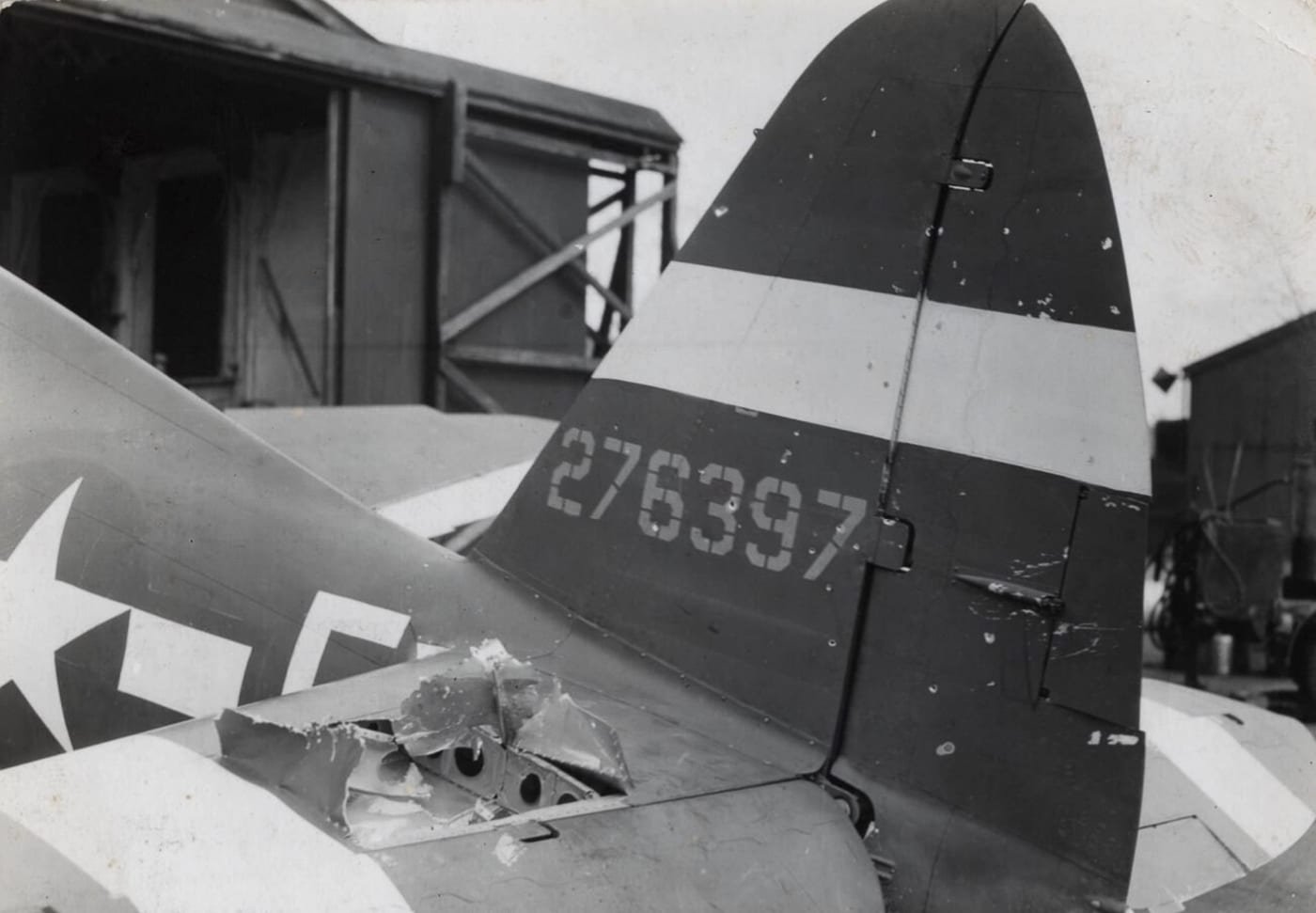
The horizontal stabilizer of a Republic P-47 Thunderbolt bears the scars of battle, showing the aircraft’s resilience in combat. The Thunderbolt’s robust design ensured many pilots returned safely. Image: NARA
Engine oil covered what was left of his windscreen such that he could not see forward.
Mayer could tell Johnsons Thunderbolt was dying, so he took his time.
The plane, however, was hugely worse off.
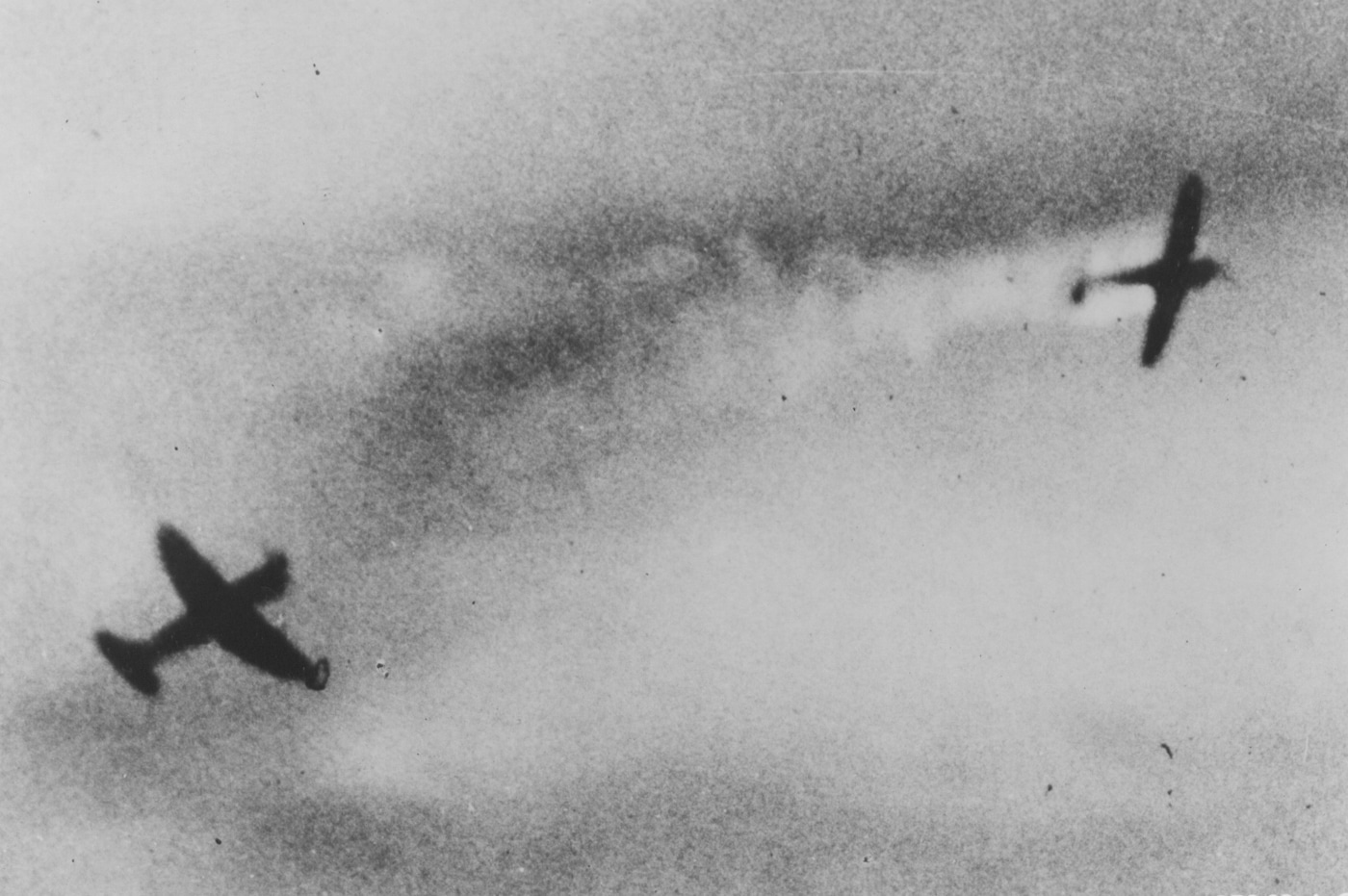
A gun camera on a Republic P-47 Thunderbolt records another Thunderbolt firing on and downing a Messerschmitt Bf 109. Image: NARA
Having shot his Focke Wulf dry, Mayer ultimately headed home.
Johnson miraculously nursed the dying plane back to an English airfield and landed without flaps or brakes.
The planes armor plate had resisted three direct hits from 20mm cannon rounds.

The experimental Republic XP-47N demonstrates its extended range during a test flight. This model was developed to meet the demands of long-range missions in the Pacific Theater. Image: NARA
There were five bullet holes through the prop.
They stopped counting at 200 rounds that had perforated the big, tough airplane.
Robert Johnson ended the war with 27 aerial victories.
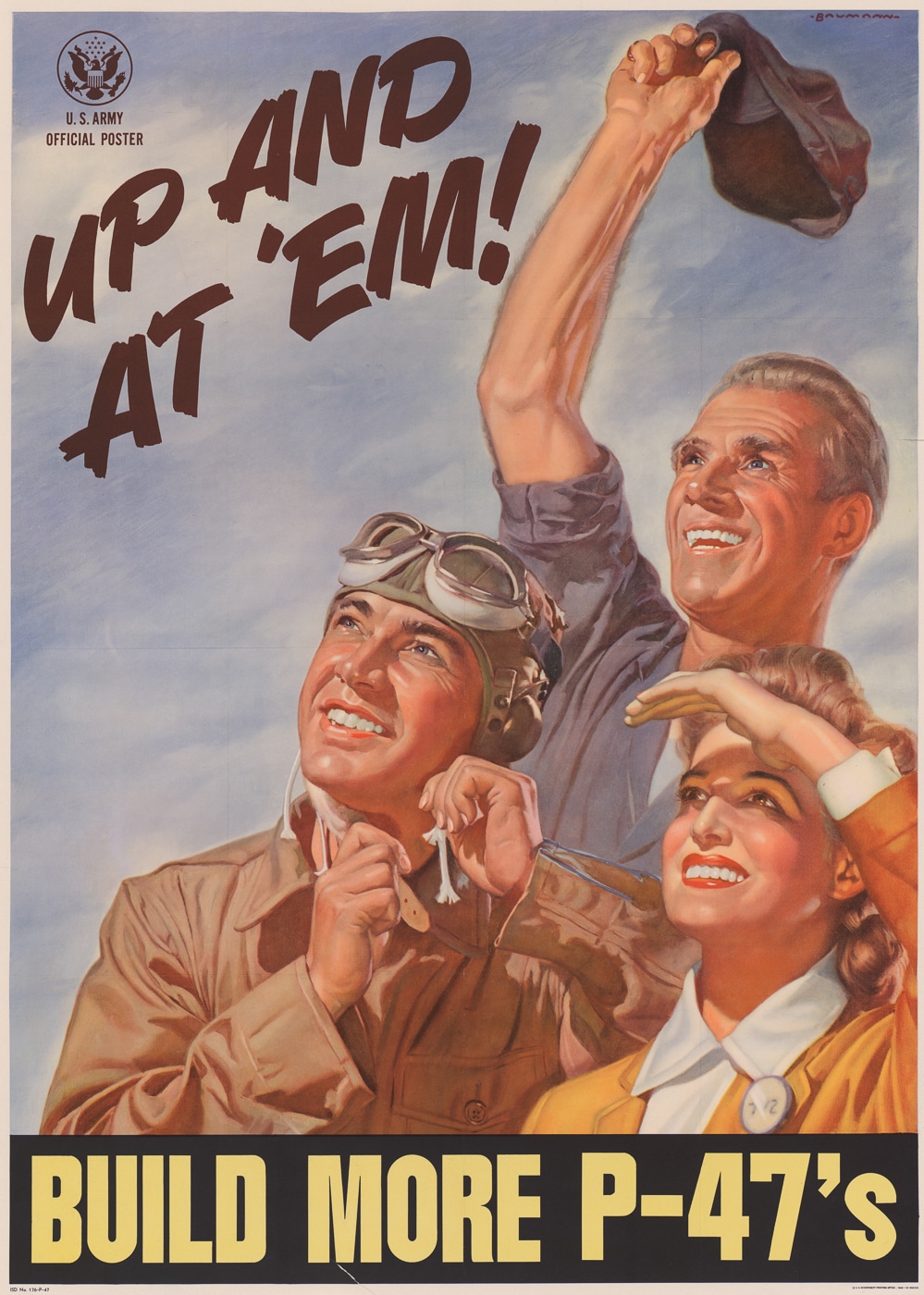
The Republic P-47 Thunderbolt featured in this World War II poster symbolizes its significant contribution to the Allied victory. Image: NARA
He was the second-most successful American ace in the European Theater of Operations.
That rich, full life he owed to the inimitably rugged P-47 Thunderbolt.




